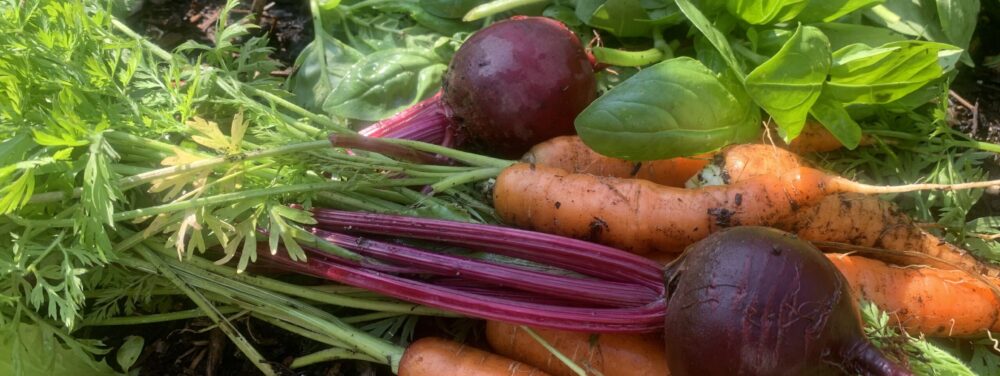Two weeks ago I was pulling weeds from our garden. Yesterday snow fell and our backyard was filled with tumbling, white flakes. Suddenly, spring felt like a far-off dream.
For months, I have been patient, waiting to plant and grow again. I recently bought a new bag of potting soil. I planned this year’s garden layout. I have been reminiscing, scrolling through last year’s pictures of our vegetable garden. I have been watching video tours of other gardeners growing roses and cosmos and lavender. And I have been reading about growing vegetables. The wait for the growing season to arrive has been hard.
Sound familiar? If you’re like me and just itching to get your hands in the soil, you’re likely welcoming the month of March with open arms. And maybe with some new seed packets, too.

The good news is that certain vegetables prefer to grow in cool temperatures. Not all plants thrive in heat. So, if you live in a gardening zone like mine (9a of the Pacific Northwest), March can be a good time to start some of your cool-weather vegetable plants (this year, just as soon as the snow melts). If you’re in a different zone and your ground remains snowy or frosty for most of March, you might be waiting until April before your soil is diggable.
Curious? Here are 5 vegetables you should plant in March (or early spring):
Peas
Hands down, peas are one of the easiest vegetables to grow. Start them indoors at the beginning of March and then, harden them off and transplant them outside 2 or 3 weeks later. Or direct sow them outdoors in March. Peas love cool temperatures and can survive light frosts. Read this post to learn how to grow peas.

Potatoes
For years, I wanted to serve our homegrown potatoes with Father’s Day dinner. But our garden potatoes were always smaller than eggs and not ready to be harvested in the middle of June. Last year I finally got the timing right. Why? Because I planted my seed potatoes in early March — earlier than I had before. And those tasty, homegrown potatoes made our Father’s Day dinner perfect. Here’s how you, too, can grow potatoes.

Carrots
Are you a carrot fan? I am, but only since I started growing my own carrots. Before I grew my own, I didn’t know how much I was missing the taste of this root vegetable. You can start sowing your carrot seeds about 3 weeks before your last spring frost date. That’s March for some of us! Learn how to plant, grow, and harvest delicious carrots from your own garden. The Farmer’s Almanac will give you your last spring frost date. Where I live, I plant carrot seeds at the end of March. Just be patient because carrot seeds take a couple of weeks to germinate.

Lettuce
Why not plant and grow a living salad bowl, too? Use a container or grow bag on your deck. Or plant lettuce in your yard. Lettuce doesn’t only love cooler temperatures. Lettuce needs cooler temperatures. Some lettuce varieties won’t germinate if the temperature is over 22 degrees Celsius. I love how the leafy greens take up little space in the garden and how easy lettuce is to grow, especially in the spring. And the taste of homegrown lettuce is superior to lettuce I have bought in any store.

Pac Choi
You say bok choy, I say pac choi. Some say they’re the same plant, and others say they’re slightly different. Whatever name you choose, one of the secrets to growing this cabbage plant is in the timing. Pac choi is another leafy green vegetable that needs cool temperatures. Eat pac choi in a stir fry, add it to soup, or toss it in a salad. Do you know that this cabbage plant is loaded with antioxidants and quercetin? This post tells you how you can grow pac choi this spring.

After the long, hard wait to get growing, don’t plant these vegetables only in March. Start planting these seeds in March, and sow the seeds again every 2 – 4 weeks in the spring. Succession planting is the key to ongoing harvests.
Right after your last frost date, plant a few marigolds and nasturtium seeds among your vegetables. The flowers help with pest control and are easy to grow from seed.


